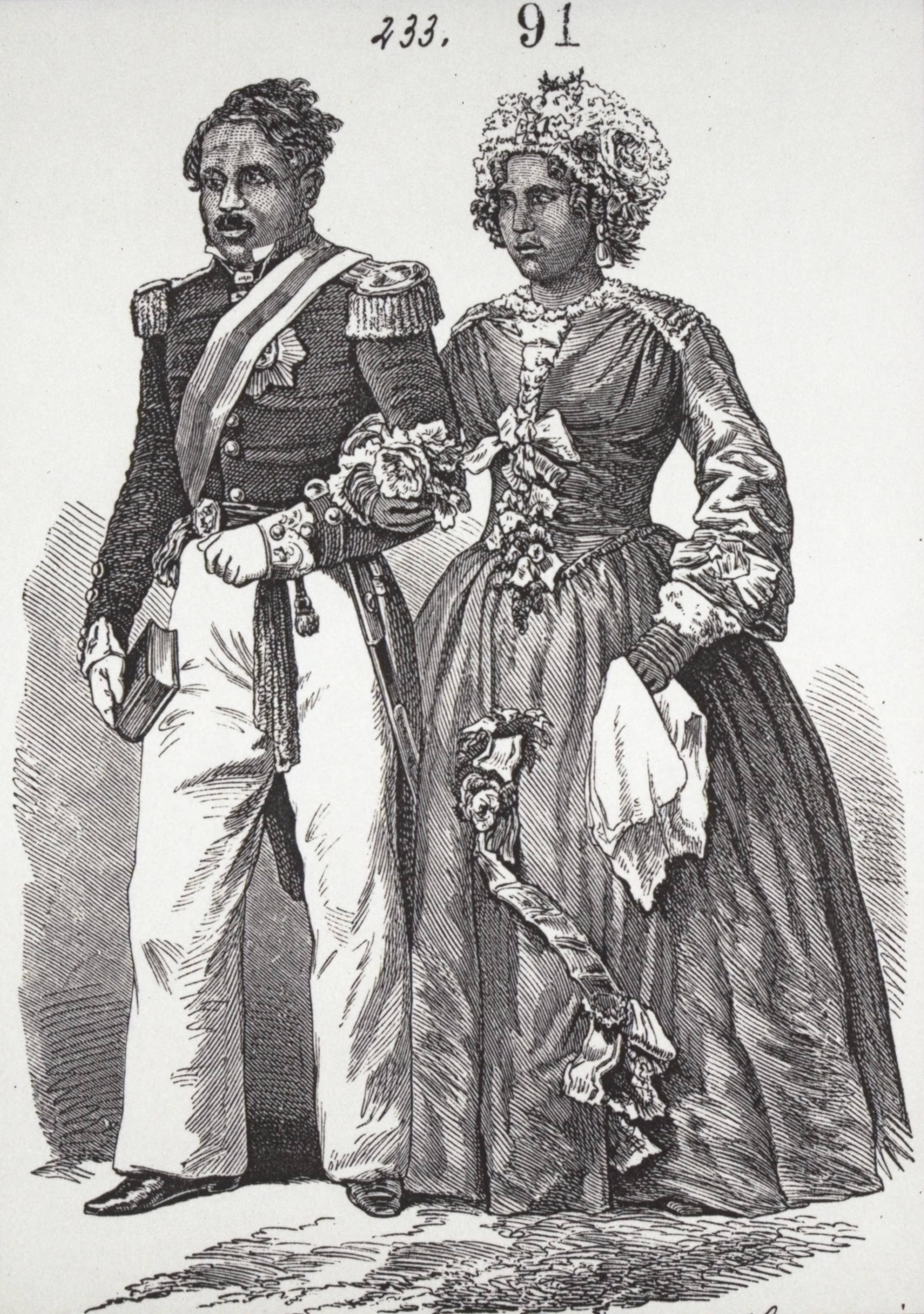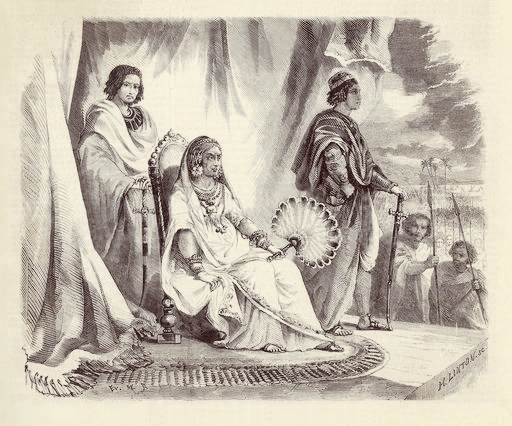|
Rainivoninahitriniony
Rainivoninahitriniony (1824–1868), was Prime Minister of the Kingdom of Madagascar between 1852 and 1864. He was the chief engineer of the Aristocratic Revolution initialized upon the attempted assassination of King Radama II. His excesses and participation in the regicide saw him fall from favor, ultimately being relieved of his position and replaced as Prime Minister by his younger brother Rainilaiarivony. Rainivoninahitriniony died in exile on May 5, 1868, shortly after an attempted coup meant to enable him to regain his position upon the death of Queen Rasoherina ended in failure. Early years Born in 1824, Rainivoninahitriniony was known in childhood as Raharo. He and his younger brother Rainilaiarivony were sons of Rainiharo, of the Tsimiamboholahy clan, Prime Minister to Queen Ranavalona I from 1833 to 1852. His mother was Rabodomiarana, a daughter of Ramamonjy. Their family were not ''andriana'' (nobles) by blood but rather belonged to the class of Hova (freemen). T ... [...More Info...] [...Related Items...] OR: [Wikipedia] [Google] [Baidu] |
Rainilaiarivony
Rainilaiarivony (30 January 1828 – 17 July 1896) was a Malagasy politician who served as the prime minister of Madagascar from 1864 to 1895, succeeding his older brother Rainivoninahitriniony, who had held the post for thirteen years. His career mirrored that of his father Rainiharo, a renowned military man who became prime minister during the reign of Queen Ranavalona I. Despite a childhood marked by ostracism from his family, as a young man Rainilaiarivony was elevated to a position of high authority and confidence in the royal court, serving alongside his father and brother. He co-led a critical military expedition with Rainivoninahitriniony at the age of 24 and was promoted to commander-in-chief of the army following the death of the queen in 1861. In that position he oversaw continuing efforts to maintain royal authority in the outlying regions of Madagascar and acted as adviser to his brother, who had been promoted to prime minister in 1852. He also influenced t ... [...More Info...] [...Related Items...] OR: [Wikipedia] [Google] [Baidu] |
Rasoherina
Rasoherina (1814 – 1 April 1868) (also Rasoherina-Manjaka) was Queen regnant of Madagascar from 1863 to 1868, succeeding her husband Radama II following his presumed assassination. Early years Rasoherina, niece of Queen Ranavalona I, was born Princess Rabodozanakandriana in 1814, the daughter of Prince Andriantsalamanandriana, of Ambohitraina and Princess Rafaramanjaka (Ramirahavavy). As a young woman, she married Raharolahy (Raharola), a successful statesman in his own right who received 15 state honors and served as Secretary to the Embassy to Great Britain (1836–37), Second Minister for Foreign Affairs in French matters (1862), Minister for the Interior (1862–64), Counselor of Government (1864–65) and Governor of Toamasina (1865). The couple divorced in 1847 and that same year she was married to Ranavalona's son and heir, Rakoto. When he succeeded his mother in 1861 as King Radama II, she was crowned with him as queen consort. Accession to the throne Rasoherina act ... [...More Info...] [...Related Items...] OR: [Wikipedia] [Google] [Baidu] |
Radama II
Radama II (September 23, 1829 – May 12, 1863 'contested'' was the son and heir of Queen Ranavalona I and ruled from 1861 to 1863 over the Kingdom of Madagascar, which controlled virtually the entire island. Radama's rule, although brief, was a pivotal period in the history of the Kingdom of Madagascar. Under the unyielding and often harsh 33-year rule of his mother, Queen Ranavalona I, Madagascar had successfully preserved its cultural and political independence from European colonial designs. Rejecting the queen's policy of isolationism and persecution of Christians, Radama II permitted religious freedom and re-opened Madagascar to European influence. Under the terms of the Lambert Charter, which Radama secretly contracted in 1855 with French entrepreneur Joseph-François Lambert while Ranavalona still ruled, the French were awarded exclusive rights to the exploitation of large tracts of valuable land and other lucrative resources and projects. This agreement, which was l ... [...More Info...] [...Related Items...] OR: [Wikipedia] [Google] [Baidu] |
Rainiharo
Field Marshal Rainiharo (died on 18 October 1852 in Rabodomiarana) was from 1833 to 1852 prime minister of the Kingdom of Imerina in the central highlands of Madagascar. Biography Rainiharo was born as ''Ravoninahitriniarivo'' into the Hova (freeman) class of the Merina people in the central highlands of Madagascar. His father, Andriantsilavonandriana, served as an adviser to the king Andrianampoinimerina. After distinguishing himself as a military officer in a series of campaigns of pacification in the southeastern part of the island, he was chosen as a spouse by Queen Ranavalona I following the death of her first husband in 1833, and was thereupon promoted to Commander-in-Chief of the military and Prime Minister of Madagascar.Madagascar prime ministers rulers.org, accessed 15 August 2008 He retained these roles until his death ... [...More Info...] [...Related Items...] OR: [Wikipedia] [Google] [Baidu] |
Ranavalona I
Ranavalona I (born Rabodoandrianampoinimerina (also called Ramavo); 1778 – 16 August 1861), also known as Ranavalo-Manjaka I and the “Mad Monarch of Madagascar” was sovereign of the Kingdom of Madagascar from 1828 to 1861. After positioning herself as queen following the death of her young husband, Radama I, Ranavalona pursued a policy of isolationism and self-sufficiency, reducing economic and political ties with European powers, repelling a French attack on the coastal town of Foulpointe, and taking vigorous measures to eradicate the small but growing Malagasy Christian movement initiated under Radama I by members of the London Missionary Society. She made heavy use of the traditional practice of '' fanompoana'' (forced labor as tax payment) to complete public works projects and develop a standing army of between 20,000 and 30,000 Merina soldiers, whom she deployed to pacify outlying regions of the island and further expand the realm. The combination of regular wa ... [...More Info...] [...Related Items...] OR: [Wikipedia] [Google] [Baidu] |



